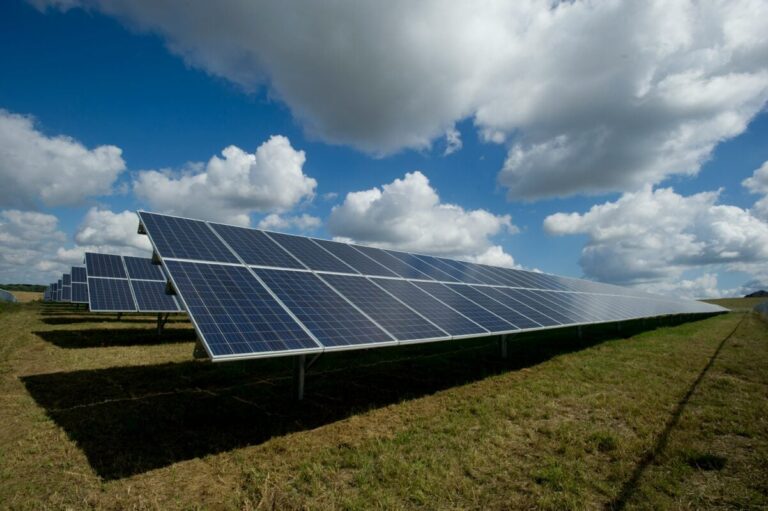Solar and storage developer Buccleuch Group has submitted a planning application for a new solar and storage development near Kettering, Northamptonshire.
The Oakley Bush solar and battery energy storage system (BESS) project is a proposed 39 MW solar development, with a 10 MW BESS proposed for the site. The scope, which covers 150 hectares of land on the Boughton Estate, could accommodate as many as 130,000 ground-mounted solar panels, positioned approximately 3.5 meters above the ground.
According to the application documentation provided to Kettering District Council, two BESS technologies are being considered for on-site use: lithium-ion batteries or vanadium flow batteries. If vanadium flow batteries are used, the site can have an energy capacity of up to 50 MWh, although this will be lower if lithium-ion batteries are used.
In a presentation given earlier this year at a public information event about the project, the developers noted that vanadium flow battery technology is being considered due to its significantly lower fire risk and longer lifespan than lithium-ion batteries. The site is expected to have an operational life of 40 years, with construction expected to last 18 months if planning permission is granted.
The formal consultation period for the project is now open and comments from the public are being accepted until December 18. Developer Buccleuch has not provided dates for when it expects construction to begin if the project is approved, although Kettering Council has set a target date for a decision of February 25, 2025.
The Oakley Bush proposal is the first English solar and BESS development proposed by the Edinburgh-headquartered Buccleuch Group. The group submitted a section 26 planning application for its 200 MW Salters BESS project in Midlothian, Scotland, to the Scottish Government’s Energy Consents Unit (ECU) earlier this year, and plans to apply for the 400 MW Lagrae BESS in the Dumfries and Galloway region. in the coming months.
Increasing solar capacity could reduce energy bills
News of new solar energy proposals could be welcome for those dealing with rising energy costs, according to new data released by the UK’s solar trade body.
Last week, Solar Energy UK published research conducted by the Durham University Energy Institute which found that if 60 GW of solar were installed by 2030, energy costs could be as much as 12% lower than if Britain had just 47 .7 GW of solar energy. capacity forecast by the National Energy System Operator (NESO) Clean Power Plan. Furthermore, the benefits of joint projects such as the Oakley Bush proposal are even greater, as digital twin studies of the UK electricity grid suggest that expanding BESS capacity could reduce energy costs even further while meeting clean energy targets could make it much easier by 2030.
Solar Energy UK recently condemned NESO over the 47 GW solar target it has set for Britain by 2030, saying it shows “a limited understanding” of the potential of solar and BESS technology, as well as of a “concerning lack of ambition” for the technologies . Solar Energy UK also claims it has had little opportunity to contribute to the NESO clean energy scenarios and criticizes the report for being based on “outdated” statistics and lacking depth.


